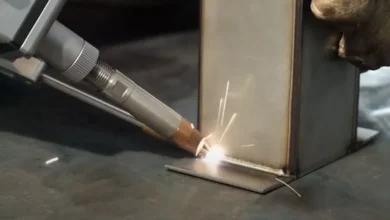The Art of skapies Making

Skapie making is a traditional craft that has been passed down through generations. It involves the creation of beautiful blankets, rugs, and other products using wool and various techniques. In modern times, traditional crafts like Skapie making are at risk of being forgotten or overshadowed by mass-produced products. However, it is important to preserve these crafts as they are not only a part of our cultural heritage but also provide economic and social benefits to communities.
The History of Skapie Making
The origins of Skapie making can be traced back to ancient civilizations. It is believed that the craft originated in Central Asia and spread to different parts of the world through trade routes. Over time, Skapie making techniques evolved and adapted to the local cultures and resources available. Different regions developed their own unique styles and patterns, making Skapie making a truly diverse craft.
The Importance of Skapie Making in Modern Society
Skapie making plays a crucial role in preserving cultural heritage. It keeps alive the traditions, techniques, and designs that have been passed down through generations. By continuing to practice Skapie making, artisans are able to connect with their ancestors and keep their cultural identity alive.
In addition to its cultural significance, Skapie making also has economic and social benefits in modern times. It provides employment opportunities for artisans, especially in rural areas where traditional crafts are often the main source of income. Skapie products are highly valued for their quality and craftsmanship, attracting customers who appreciate handmade and unique items.
The Materials Used in Skapie Making
Wool is the primary material used in Skapie making. Different types of wool can be used depending on the desired texture and quality of the final product. Some common types of wool used include merino wool, alpaca wool, and mohair.
Natural dyes are often used to color the wool in Skapie making. These dyes are derived from plants, insects, and minerals, and they create a wide range of vibrant colors. However, synthetic dyes have also become popular due to their ease of use and availability of a wider color palette.
The Tools of the Trade
Spinning wheels and looms are the main tools used in Skapie making. Spinning wheels are used to spin the wool into yarn, while looms are used to weave the yarn into fabric. These tools have been used for centuries and have undergone minimal changes in their design.
In addition to spinning wheels and looms, Skapie makers also use other tools and equipment such as knitting needles, crochet hooks, and scissors. These tools help in creating intricate patterns and finishing touches on the Skapie products.
The Process of Skapie Making
The process of Skapie making involves several steps, starting from the shearing of sheep to the finished product. First, the wool is cleaned and carded to remove any impurities and align the fibers. Then, it is spun into yarn using a spinning wheel. The yarn is then dyed using natural or synthetic dyes.
Once the yarn is ready, it is woven into fabric using a loom. This can be done using different weaving techniques to create various patterns and designs. After the fabric is woven, it is washed and finished to enhance its softness and durability. Finally, the fabric is cut and sewn into blankets, rugs, or other Skapie products.
The Different Types of Skapies
Skapies come in various forms, including blankets, rugs, shawls, and even clothing items like sweaters and hats. Each type of Skapie has its own unique characteristics and uses.
Blankets are perhaps the most common type of Skapie product. They are known for their warmth and durability, making them perfect for cold climates. Skapie blankets often feature intricate patterns and designs that reflect the cultural heritage of the region they come from.
Rugs are another popular type of Skapie product. They are often used as decorative pieces in homes and can add a touch of warmth and coziness to any space. Skapie rugs are known for their durability and ability to withstand heavy foot traffic.
The Role of Skapie Making in Cultural Heritage Preservation
Skapie making plays a vital role in preserving cultural heritage. It keeps alive the traditional techniques, designs, and patterns that have been passed down through generations. By practicing Skapie making, artisans are able to connect with their ancestors and keep their cultural identity alive.
Skapie making also helps to preserve traditional knowledge and skills. The craft requires a deep understanding of wool, dyeing techniques, and weaving methods. By passing on this knowledge to future generations, Skapie makers ensure that these skills are not lost.
The Challenges of Skapie Making in the Modern World
Skapie makers face several challenges in the modern world. One of the main challenges is economic viability. Mass-produced products often offer cheaper alternatives to handmade Skapies, making it difficult for artisans to compete in the market. Additionally, the time-consuming nature of Skapie making means that artisans can only produce a limited number of products, further impacting their ability to make a sustainable income.
Another challenge is the lack of interest and appreciation for traditional crafts among younger generations. With the rise of fast fashion and mass-produced goods, traditional crafts like Skapie making are often seen as outdated or irrelevant. This lack of interest can lead to a decline in the number of skilled artisans practicing the craft.
The Future of Skapie Making
Despite the challenges, there is hope for the future of Skapie making. Many artisans and organizations are working to promote and preserve traditional crafts. They are finding innovative ways to market Skapie products and educate consumers about the value of handmade and unique items.
Technology also has a role to play in the future of Skapie making. Advancements in machinery and equipment can help streamline the production process, making it more efficient and cost-effective. However, it is important to strike a balance between embracing technology and preserving the traditional techniques and skills that make Skapie making unique.
Skapie making is a traditional craft that holds immense cultural, economic, and social significance. It is important to preserve this craft in modern times to ensure that our cultural heritage is not lost. Skapie making provides employment opportunities for artisans, connects us with our past, and offers unique and high-quality products that cannot be replicated by mass-produced goods. By supporting Skapie makers and valuing their craft, we can help ensure that this traditional art form continues to thrive for generations to come.



